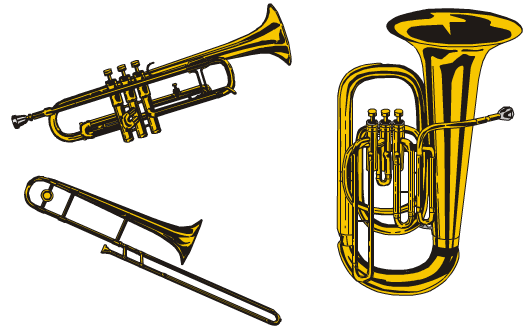How Brass Instruments Work

Brass instruments are any tube that can be played with the lips. They're not always brass, as instruments like the Aborigine digeridoo, and the conch shell, are made of wood, and shell, respectively. However, most modern brass instruments have a long, cone-shaped tube and flaring bell. Usually the tube is coiled in order to make it easier to hold. Often they have valves or other mechanisms to extend the range of notes that can be played with the instrument.
Making Sound
Modern brass instruments produce sound through a metal mouthpiece. The mouthpiece is similar on most brass instruments, usually varying only in size. Sound is produced by placing the lips on the mouthpiece and blowing while vibrating the lips. The larger the mouthpiece, the lower the sound of the instrument.
Playing Different Notes
By tightening or loosening the lips, it is possible to produce different notes. However, few notes can be created this way. To overcome the problem, brass instruments have lots of tubes, which can be selected with valves in order to change the lenght of the instrument, and thus the pitch of the note. Instruments like the trombone directly modify the length of the instrument with an adjustable slide.
Use this trumpet to see how the instrument can be lengthened to lower the pitch. Click on the mouthpiece or any key to see the airflow and hear a note. Notice that the more tubing the air has to pass through, the lower the note.
Next: Woodwinds | Up: How Instruments Work
